Fact Sheet FS1327
There are approximately 70 cockroach species found in the U.S. Most of them live outdoors in the woods. Seven species are found in New Jersey and are pests of both residential and commercial structures. The most common pest species are the German cockroach (Blattella germanica), American cockroach (Blatta americana), and Oriental cockroach (Blatta orientalis).
From our survey of approximately 1,500 low-income apartments in four cities in New Jersey during 2018-2019, 36% of them had cockroaches. The German cockroach represented 97.8% of the occurrences, while American and Oriental cockroaches represent 0.8% and 2.5% of the occurrences. Other species that are occasionally found in buildings or other man-made structures include: the brownbanded cockroach (Supella longipalpa), the spotted Mediterranean cockroach (Ectobius pallides), Pennsylvania wood cockroach (Parcoblatta pennsylvanica), and Surinam cockroach (Pycnoscelus surinamensis). This publication introduces their identification, biology, and control strategies.
General Morphological Characteristics, Biology, and Control
While cockroaches can range widely in size and appearance, they all share a number of physical characteristics that make them recognizable as a cockroach. These include: oval shape, long “thread-like” antennae, legs with spines, and a “shield-like” plate called the pronotum just behind the head. Cockroaches go through gradual metamorphosis (egg, nymph, and adult). The adult female produces an egg capsule (ootheca) which contains up to 44 eggs, depending upon the species. Nymphs typically go through 5–7 stages (instars), shedding their skin (molt) between each stage before reaching adulthood. Of the seven common pest species in New Jersey, three are small (½–5/8 inch long) and four are large (1–2 inches long). The smaller species include the German, brownbanded, and spotted Mediterranean cockroaches, while the American, Oriental, Pennsylvania wood, and Surinam cockroaches are larger. Cockroaches are typically controlled by a combination of non-chemical and chemical methods. If applying pesticides, be sure to follow product label use directions.
1. German Cockroach, Blattella germanica (L.)
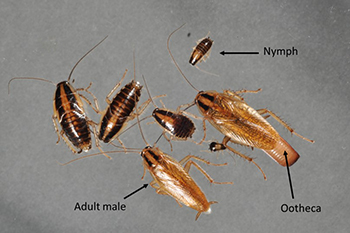
Figure 1. German cockroach life stages.
The adult German cockroach is ½ to 5/8 inch (13 to 16 mm) long and golden-brown to dark brown in color. Adults are commonly identified by the two dark parallel stripes on their pronotum and they have wings covering their thorax and abdomen but are incapable of flying. The nymphs range in size from 1/8 to 9/16 inch (3 to 14 mm) and are dark in color with a light section posterior to the head. The ootheca typically contains about 40 eggs and is carried by the adult female until just before hatch (Figure 1). A female produces 5–8 oothecae with a total of 200–250 eggs in her lifetime. The entire life cycle (egg to egg) is completed in about 100 days.
This species is found worldwide and is the most common cockroach species in homes, restaurants, and hotels in the U.S. It only lives in buildings. Cold temperature (< 60 °F) is the limiting factor for the survival and egg production of this species. It feeds on a wide range of human foods, pet food, fruit, leather, and even book bindings. They are most active at night and prefer to live in cracks and crevices that are not frequently disturbed. Seeing German cockroach activity during the daytime hours is typically an indication of a severe infestation. Within a home, they are mostly found in the kitchen and bathroom where food and water are available. In the kitchen, heat producing areas, around the stove and refrigerator, usually have the largest number of cockroaches, while in the bathroom they are most commonly found around the sink, toilet, and tub or shower.
German cockroaches are best controlled by using a combination of non-chemical and chemical methods, including excellent sanitation and reducing clutter. Keep the kitchen clean, seal food materials, reduce water sources, and use sticky traps to monitor their presence and distribution. Keep cabinets, countertops, and the area around the refrigerator free from clutter, including paper bags. Most over-the-counter pesticides sprays and aerosols are not effective. However, baits (gel bait and bait station) can be used very effectively to control German cockroaches. Baits should be placed in areas where cockroaches are most prevalent, in areas not accessible to children and pets. Boric acid dust is another effective material that can be applied in hard-to-reach areas such as behind refrigerators, stoves, and in cracks and crevices behind cabinets. Total release aerosols, also referred to as “bug bombs” are not effective and should be avoided. Sticky traps are very useful for monitoring the effectiveness of control measures. Place traps in areas where cockroaches are most active. After treatment, periodically check the traps and visually check the cabinets, stove and refrigerator areas, and other areas with food and water to confirm cockroaches are eliminated. For more detailed information, please see FS1322 German Cockroach.
2. American Cockroach, Periplaneta americana (L.)
The adult American cockroach is 1½ to 2 inches (34–53 mm) long, reddish brown with a yellow margin on the pronotum and body region behind the head. Both males and females have wings that extend beyond the tip of the abdomen. Adults rarely fly but are capable of flight during hot and humid summer conditions. Nymphs are wingless and reddish brown in color. An ootheca contains about 14–16 eggs and is deposited in cracks or on the substrate by the female (Figure 2). A female produces about 10 oothecae with a total of 150 eggs in her lifetime. The entire life cycle (egg to egg) is completed in about 210 days to more than two years.
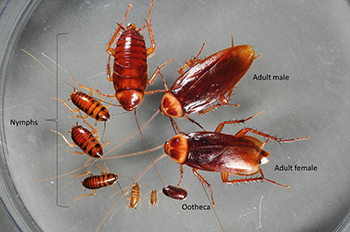
Figure 2. American cockroach life stages.
American cockroaches are also referred as palmetto bugs. They prefer living in moist places both inside and outside buildings and are most active during the nighttime hours. It occurs more commonly in subtropical and tropical regions than in temperate regions. Within buildings, it is often found in basements, heating ducts, and the sewage system. It feeds on plant materials, organic material in sewage, and human foods, etc.
Control of American cockroaches can be challenging because their source is often far away (hundreds of feet) from where they show up in homes and commercial buildings. Often their breeding areas are in city sewer lines or damaged and/or abandoned plumbing lines. As a result, control measures are often handled at the site of the symptom rather than the source of the problem. To control American cockroaches, place sticky traps to monitor their distribution and to remove cockroaches. Sealing gaps around plumbing fixtures and reducing their hiding places will also be helpful. Also, seal cracks and holes on the wall and floors to minimize their harborages. If necessary, apply bait or an insecticide spray in areas of activity.
3. Oriental Cockroach, Blatta orientalis (L.)
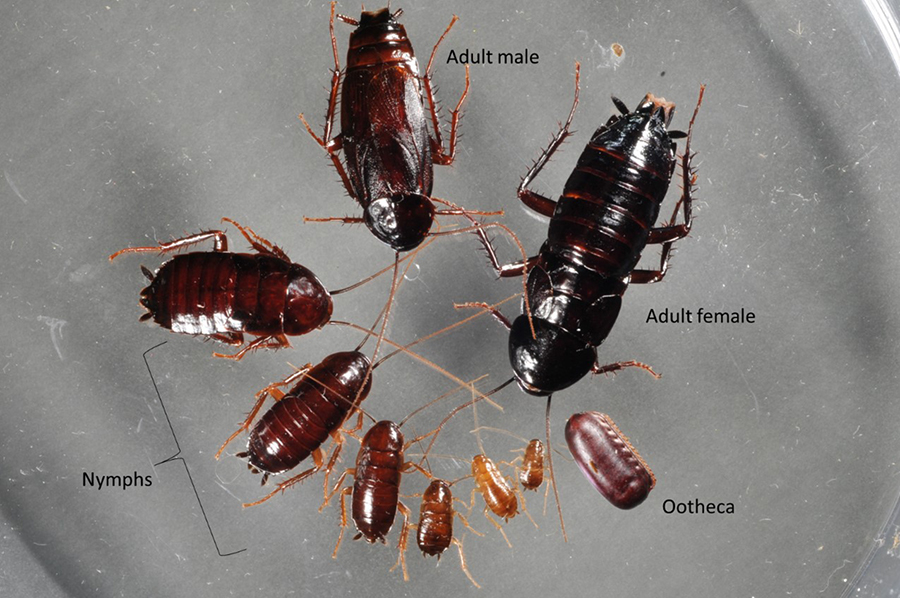
Figure 3. Oriental cockroach life stages.
The adult female is about 1 inch (25 mm) and the male, about 1¼ inches (32 mm) long. They are shiny black to dark reddish brown; adult male wings cover 75% of the abdomen, but the males do not fly. Adult females lack wings but do possess small wing pads (Figure 3). The young nymphs are reddish-brown in color and become increasingly darker in color during the later nymphal instars. Similar to American cockroaches, oothecae are deposited in cracks or on the substrate by the female. A typical ootheca contains about 16 eggs. A female produces about 18 oothecae with a total of 280 eggs in her lifetime. The entire life cycle (egg to egg) is completed in about one year.
Oriental cockroaches are also referred as water bugs because they are found near damp places. They are more common in temperate regions than subtropical regions. Their populations peak in late spring and early summer. Like the German and American cockroach, they are most active during the nighttime hours however, they move much slower than the German and American cockroach.
To prevent Oriental cockroaches invading homes, reduce the organic material around the foundation, including vegetation and mulch, seal crevices and gaps on the walls, windows, and doors, and eliminate clutter. Place sticky traps around baseboards to detect and catch invading cockroaches. Apply a granular bait around the exterior of the home to kill them if necessary.
4. Brownbanded Cockroach, Supella longipalpa (F.)
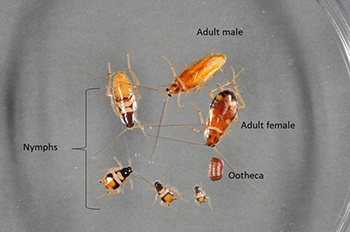
Figure 4. Brown-banded cockroach life stages.
Brownbanded cockroaches are similar in size to the German cockroach. Both sexes possess wings as adults, with the wings of the male extending past the tip of the abdomen, while the female wings are shortened, leaving the tip of the abdomen exposed. Only adult males can fly. Their color is light brown to brown. There are two pale brown bands on the thorax of nymphs. Both sexes have a pale brown band at the base of wings and another band at ⅓ from the base. Oothecae are glued in cracks or on substrate by the female (Figure 4). A typical ootheca contains about 18 eggs. A female produces 14 oothecae with a total of 250 eggs in her lifetime. The entire life cycle (egg to egg) is completed in about 210 days.
Brownbanded cockroaches are worldwide in distribution and are more common in tropical and subtropical regions than in temperate regions. This species requires less moisture than the German cockroach and prefers to live in areas of the home that are constantly warm, such as near water heaters. In addition to infesting kitchens and bathrooms, they can also be found in areas away from food and moisture throughout the home. Control methods are similar to those used for German cockroach control but should extend outside the kitchen and bathroom, wherever activity is seen.
5. Spotted Mediterranean Cockroach, Ectobius pallidus (Olivier)
The spotted Mediterranean cockroach is 3/8 inch (8–9 mm) in size. It is light yellow with numerous dark brown spots on the front wings (Figure 5).
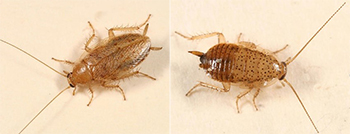
Figure 5. Spotted Mediterranean cockroach. Left: adult female; Right: nymph.
The spotted Mediterranean cockroach was accidentally introduced from Europe and was first found in Massachusetts in 1948. It spread slowly in the northeast and has become more common in New Jersey in recent years. It lives in a variety of outdoor environments. This species requires more than one year to finish a life cycle, overwintering as an egg and intermediate nymphal instar. Each female lays two oothecae, each contains 17 eggs. The females live for about 42 days. Males live for a shorter time than females. Females can also produce nymphs parthenogenically (without mating).
Adults of this species can be found flying around structures and enter homes through doors, windows, and vents. However, it is very rare that they will reproduce and infest structures, once inside. Like other cockroach species, it is agile and can run extremely fast. To control them, seal any gaps around the windows, doors, and vents. Place sticky traps around baseboards to trap them. Use a vacuum to collect any individuals found in buildings. Exterior treatments to foundations, around doors and windows, porches, patios, and other areas where outside lights are located may help control their numbers.
6. Pennsylvania Wood Cockroach, Parcoblatta pennsylvanica (DeGeer)
The adult male Pennsylvania wood roach is about 1 inch and females are about ¾ inch long (19 mm). Males are dark brown with wings extending beyond the end of the abdomen. Females are wider, more reddish and with shorter wings that do not reach to the end of the abdomen (Figure 6). Males can fly and are attracted to lights during the night. A typical ootheca contains up to 36 eggs. A female can produce 30 oothecae with a total of 1050 eggs in her lifetime. The entire life cycle (egg to egg) is completed in about 11 months. The adults live about 6 months.
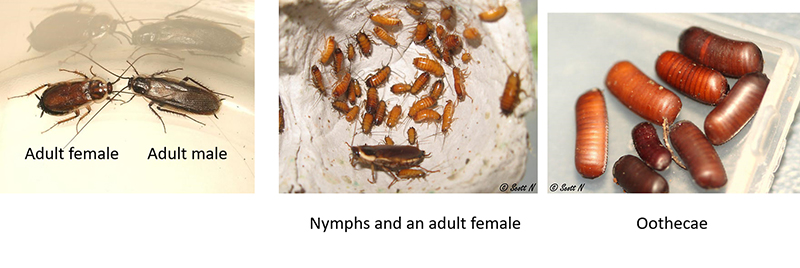
Figure 6. Pennsylvania wood cockroach life stages.
The Pennsylvania wood cockroach is common in eastern U.S. They are found outdoors beneath loose bark in woodpiles, stumps, and hollow trees. They are usually brought indoors along with firewood. During mating season, adult males may fly into homes. Pennsylvania wood cockroaches feed primarily on decaying organic matter. They rarely breed indoors. To prevent them invading homes, seal crevices and gaps on the walls, windows, garage door, and entry doors to prevent them coming into homes. Sticky traps can be placed along baseboards to detect and catch invading cockroaches. Exterior treatments to foundations, around doors and windows, porches, patios, and other areas where outside lights are located may help control their numbers. Interior treatment is rarely needed.
7. Surinam Cockroach, Pycnoscelus surinamensis (L.)
Adults are ¾ to 1 inch (18–25 mm) long and brown in color. Its pronotum (the area between head and base of wing) is dark brown to black (Figure 7). Their antennae are short compared to the other cockroach species. The dark brown nymphs resemble Oriental cockroaches and can be distinguished by the dull, rough posterior abdominal segments.
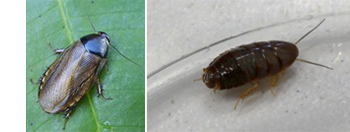
Figure 7. Surinam cockroach. Left: adult female; Right: nymph.
Surinam cockroaches are worldwide in distribution. In the U.S. it is common in the southeastern region from North Carolina to Texas, and south through Florida. Only females are found in the United States. They reproduce by parthenogenesis (without mating). Each ootheca contains 14–48 eggs. The nymphs hatch inside her abdomen. Surinam cockroaches burrow into loose soil. They are active at night and feed on plant material which can cause damage to plants. They are not found outdoors in New Jersey but can be introduced into homes and commercial buildings in the soil of potted plants. It is a source of annoyance in greenhouses, zoos, botanical gardens, etc.
In buildings with Surinam cockroaches, removal of infested potted plants or applying cockroach bait is effective in controlling them. Removal of leaf litter, landscape timbers, and firewood will reduce Surinam cockroach habitat in parts of the country where outdoor populations exist.
Selected References
Photo credits: John Obermeyer and Changlu Wang (Figures 1–4); Tom Murray (Figure 5); Scott Nacko (Figure 6); Michele White (Figure 7 - left); Wikipedia (Figure 7 - right)
November 2020
Copyright © 2025 Rutgers, The State University of New Jersey. All rights reserved.
For more information: njaes.rutgers.edu.
Cooperating Agencies: Rutgers, The State University of New Jersey, U.S. Department of Agriculture, and Boards of County Commissioners. Rutgers Cooperative Extension, a unit of the Rutgers New Jersey Agricultural Experiment Station, is an equal opportunity program provider and employer.

